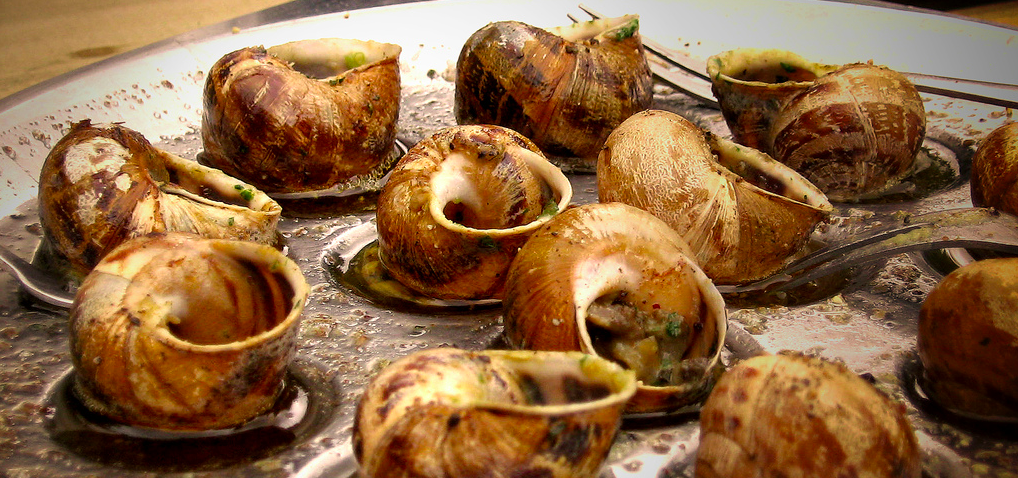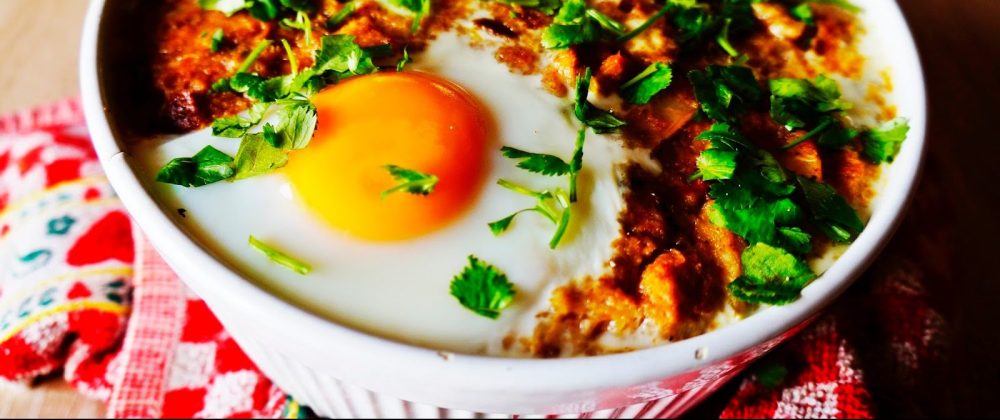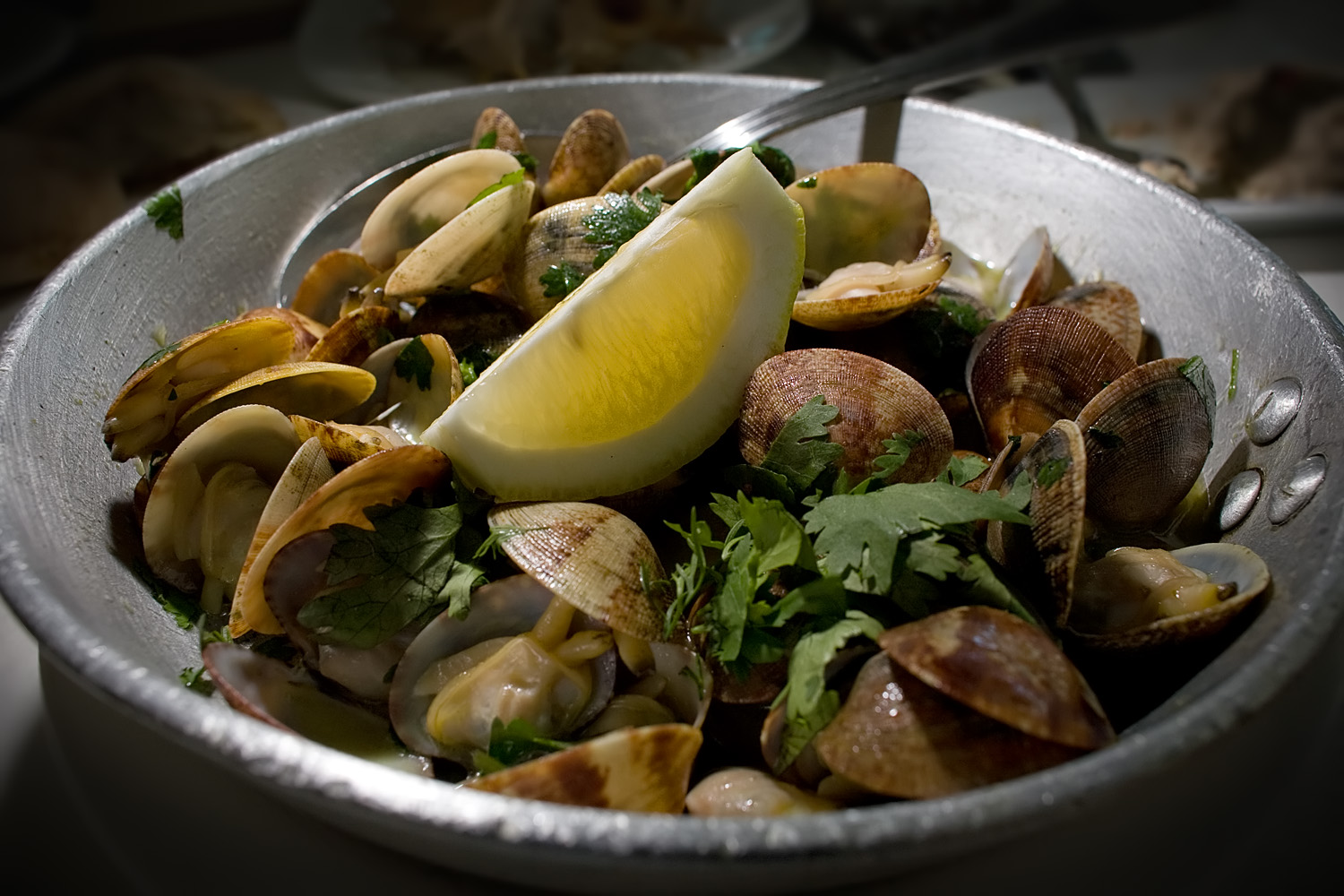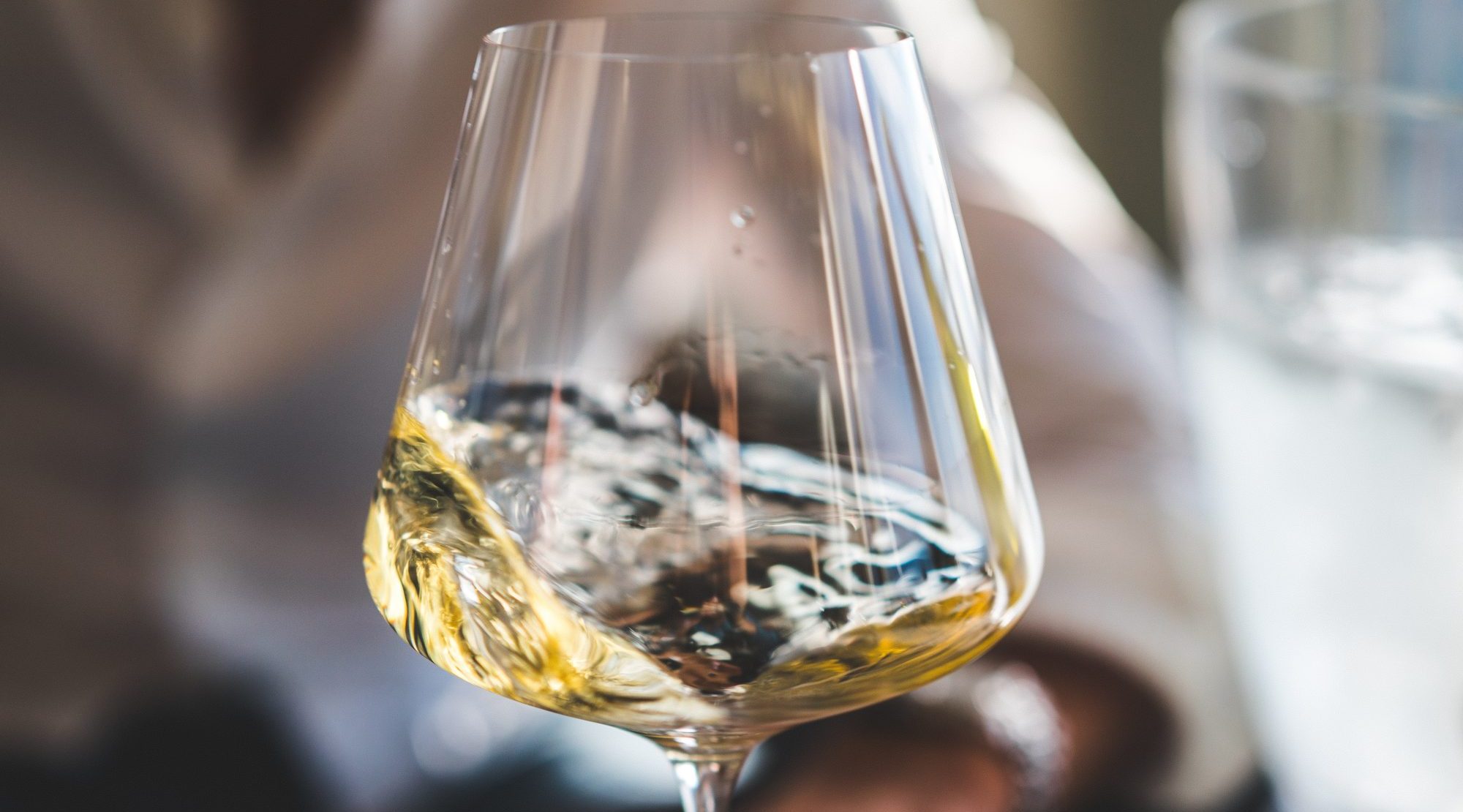Suck it Up and do What the Portuguese do, Eat Caracois!

It’s summertime in Portugal and as the tourists flood Lisbon, the Portuguese retreat to their local restaurants and bars to enjoy the gastronomic tradition of the season: snails! Yes, that’s right, Caracóis are to the Portuguese as hot wings are to Americans. Though savvy to the tradition of eating snails in France, most Americans remain perplexed as to its appeal. But make no mistake, the appeal is absolutely visceral here in Portugal! In mid-June, long lines of eager patrons stand patiently in front of sandwich boards stating, “Há Caracóis!” (There are Snails!)
Between the hours of 5 and 7 pm, bars and cafes are packed with people enjoying heaping plates of garlicky snails. Though smaller than their French cousins, their flavor is no less enticing. Cooked in a flavorful broth, it’s customary to suck them right out of their shells! Toothpicks are also available should your need a more “refined” technique.
The Tradition of Portuguese Snail Dishes
The tradition of eating Caracóis in the summer originated in the southerly Portuguese region of Alentejo, with influence from the Andalucia region in southern Spain. Both of these regions tend to be extremely hot in the summer with just enough humidity to promote snail growth.
Swimming in a savory broth, they are flavored with olive oil and/or butter, garlic, Portuguese chili pepper sauce known as piri-piri, and a ridiculous amount of oregano. The occasional minor addition may include ingredients such as diced tomato, laurel or presunto. As for the leftover broth? A thick piece of crusty bread can be used to sop up the remaining juices!

What to Drink with Snails in Portugal
The top choice here is a cold glass of Portuguese beer, but I prefer a vibrant natural white wine with enough acidity to balance the rich garlic-infused olive oil. Roupeiro and Rabo de Ovelha grapes (literally translated to Wardrobe and Sheep’s Tail) are fabulous options as they tend to show refreshingly ripe, tropical fruit flavors. Otherwise, why seek out a glass of Portuguese sparkling wine called Espumante? Sparkling wine’s natural acidity cuts through the oil and cleanses the palate. Plus, they’re downright delicious, especially from regions like Bairrada and Dao.
Where to Eat Caracóis in Portugal
There’s no one place to eat caracóis, as several cafes and restaurants throughout the city are catering to locals; however, you do have some tried and true restaurants to target such as Casa dos Caracóis, O Rei do Caracóis, Coreto do Bairro, O Palacio and Boteca da Linha.
If you’re keen to learn where and how to cook up Portuguese snails, let us custom design a market tour and cooking class in Lisbon just for you. We can also slide you into a walking food tour of the very best culinary treats in Lisbon, including caracóis.
Sustainable, healthy and abundant, don’t miss out on Portugal’s perfect summer fare!






